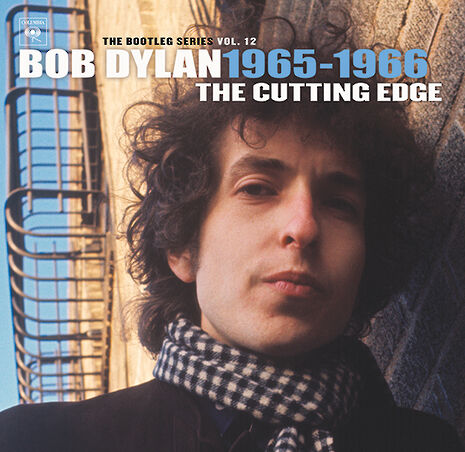Album: Bob Dylan – The Cutting Edge 1965-66
An interesting listen for fans, but with “little in the way of hidden gems” says Tom Ronan

Bob Dylan’s musical output in the mid-60s has been lauded, mythologised and pored over to a degree unparalleled by almost any other artist. In just 14 short months in 1965 and 1966, he released three of his finest albums, the outtakes and rehearsals of which can be heard on The Cutting Edge, the latest addition to his now expansive bootleg series. This is the newly electrified Dylan, keen to jettison his reputation as a protest singer; the Dylan of classics such as ‘Like a Rolling Stone’ which redefined the scope of popular music. Of all his guises and incarnations, this is probably the most instantaneously familiar, save perhaps for his ragged folk days: sardonic, sarcastic, surreal and invariably sporting a pair of dark sunglasses and drainpipe trousers. Even Dylan himself has admitted that he has never matched this level of creative output again, longing to recreate “that thin, wild mercury sound”.
The Cutting Edge provides an insight into Dylan’s often haphazard writing and recording process. Familiar favourites can be heard in a whole new light: ‘Like a Rolling Stone’ is slowed down as a waltz, ‘Visions of Johanna’ is given a shot of blues-rock adrenaline and ‘She Belongs to Me’ appears in a serene unaccompanied form. Everything was done completely live in the studio, so we can imagine Dylan muttering something to his band about “doing it as a blues number” and expecting everyone to come in. When they do come in his band are as tight as ever, Kooper’s organ playing adding welcome a touch of disjointedness.
In its fullest form, The Cutting Edge comprises 111 items of studio material, including outtakes, warm-ups, alternate versions and half-complete scraps. Columbia and Legacy Records seem intent on squeezing every penny out of this period, sweeping up every little shred of tape from the cutting room floor in an effort to immortalise every moment Dylan so much as coughed near a microphone. It would seem that many of these scraps would be of interest only to diehard fans and obsessives, though given Dylan’s cultish following, this probably constitutes a significant market.
At his artistic peak, Dylan was hitting the bullseye every time. We don’t hear ten versions of the sublime ‘Gates of Eden’ because he got it right on the first take. The music was going straight from his mind onto acetate. Though he would later make more carefully constructed music, this was a fertile period where anything and everything made it on to the records. This all means that there is little in the way of hidden gems. If you come to The Cutting Edge hoping to uncover the raw creative process, you might be left disappointed. The three albums of this period, written and released in rapid succession, already document the full force of this vital, untamed energy.
 News / Eight Cambridge researchers awarded €17m in ERC research grants27 December 2025
News / Eight Cambridge researchers awarded €17m in ERC research grants27 December 2025 News / News in Brief: carols, card games, and canine calamities28 December 2025
News / News in Brief: carols, card games, and canine calamities28 December 2025 News / Caius mourns its tree-mendous loss23 December 2025
News / Caius mourns its tree-mendous loss23 December 2025 Interviews / Meet Juan Michel, Cambridge’s multilingual musician29 December 2025
Interviews / Meet Juan Michel, Cambridge’s multilingual musician29 December 2025 Sport / Hard work, heartbreak and hope: international gymnast Maddie Marshall’s journey 29 December 2025
Sport / Hard work, heartbreak and hope: international gymnast Maddie Marshall’s journey 29 December 2025







